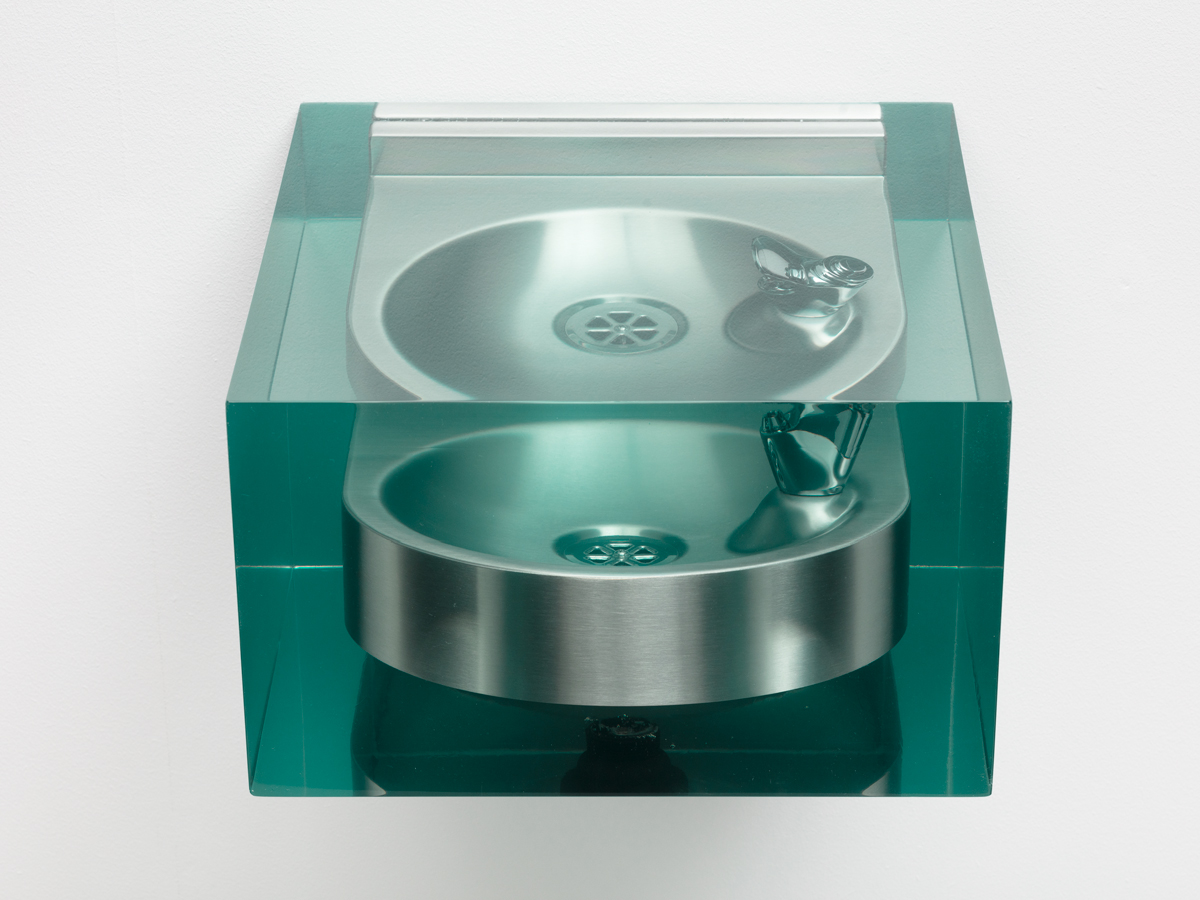[ad_1]
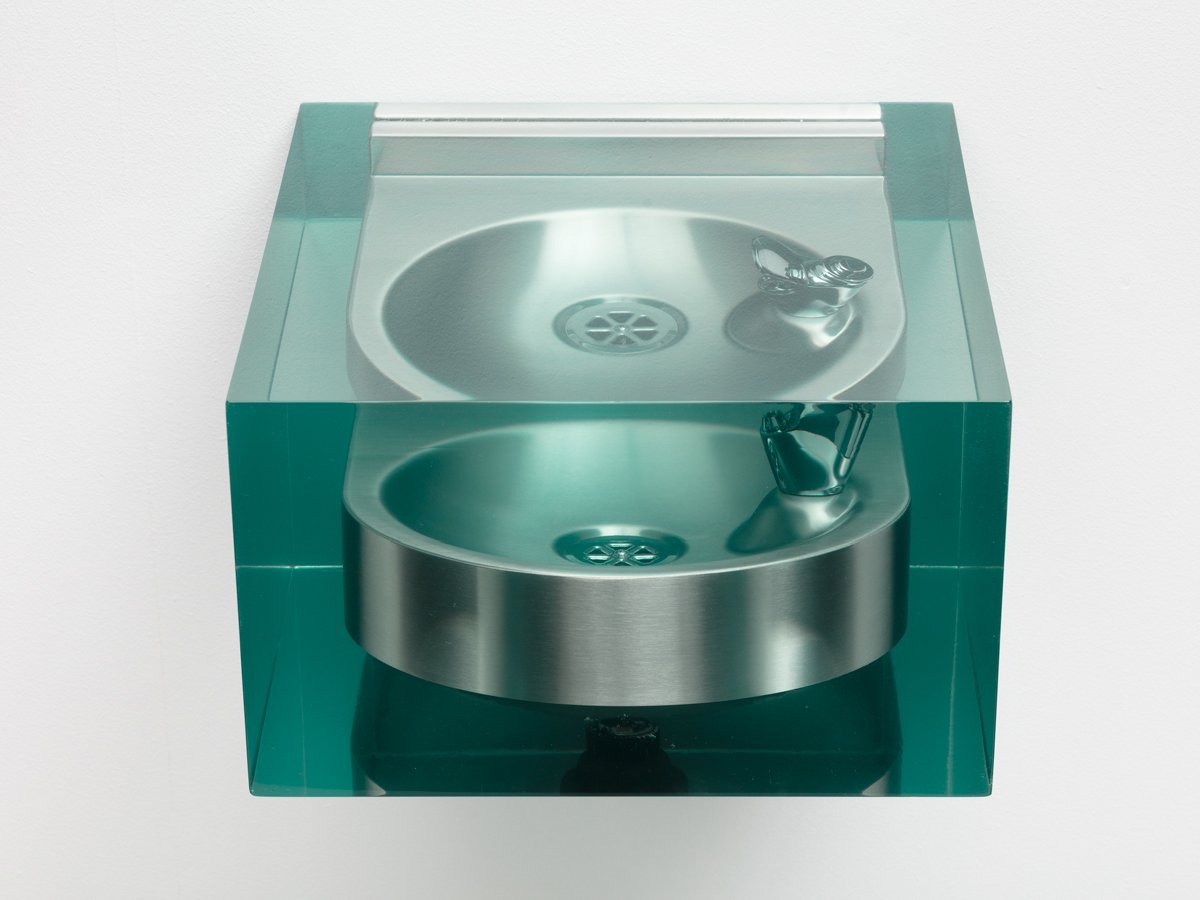
Prem Sahib, Roots, 2018, steel drinking fountain and resin. “Queer Abstraction.”
©PREM SAHIB/COURTESY THE ARTIST, LEWIS RONALD, AND SOUTHARD REID, LONDON
Summer is travel season for many, and museums around the world are rising to the occasion, hosting a bevy of must-see shows. The Minneapolis Institute of Art promises to break new ground with its exhibition of Native women artists, and the Museu de Arte de São Paulo is staging what could be a radical revision of art history that incorporates proto-feminist perspectives. On the retrospective front, there are major shows for Dora Maar, Mrinalini Mukherjee, Virgil Abloh, Natalia Goncharova, Image Bank, and many others. Below, a look at the season’s most promising shows.
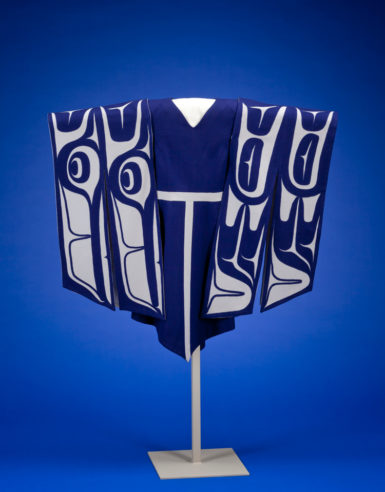
Dorothy Grant (Haida) with Robert Davidson, Hummingbird Dress, 1989, wool. “Hearts of Our People.”
©1989 DOROTHY GRANT AND ROBERT DAVIDSON/DENVER ART MUSEUM COLLECTION: NATIVE ARTS ACQUISITION FUND, 2010
“Hearts of Our People: Native Women Artists”
Minneapolis Institute of Art
Through August 18
Curators Jill Ahlberg Yohe and Teri Greeves (a member of the Kiowa tribe) brought together 21 scholars to consult on every aspect of this exhibition, from its formulation and themes to its programming and catalogue. The exhibition surveys contributions of Native women, many of whom have been historically overlooked or undervalued by critics, going back 1,000 years. It features some 115 works by artists from North America, among them DY Begay (Navajo) and Anita Fields (Osage/Muscogee Creek), who were commissioned to create new work for the show. —Maximilíano Durón
“Queer Abstraction”
Des Moines Art Center, Iowa
Through September 8
Organized by Jared Ledesma, this show will look at the ways in which artists have turned to abstraction as direct responses to specific moments in history, from when Marsden Hartley painted his fallen lover at a time when homosexuality was criminalized in many places through Felix Gonzalez-Torres’s poetic mediations on the AIDS crisis of the 1980s and ’90s. Also included in the show are works by Louise Fishman, Math Bass, Harmony Hammond, Mark Bradford, Carrie Moyer, Sheila Pepe, and Prem Sahib, as well as new commissions by Elijah Burgher, Mark Joshua Epstein, and Tom Burr. It’s not the first-ever survey ever of its kind (the Leslie-Lohman Museum of Gay and Lesbian Art in New York had a landmark one in 2017), but it’s a step forward for the museum field, and for the Des Moines Art Center, which, like many arts institutions, has never before staged an exhibition devoted exclusively to queer art. —M.D.
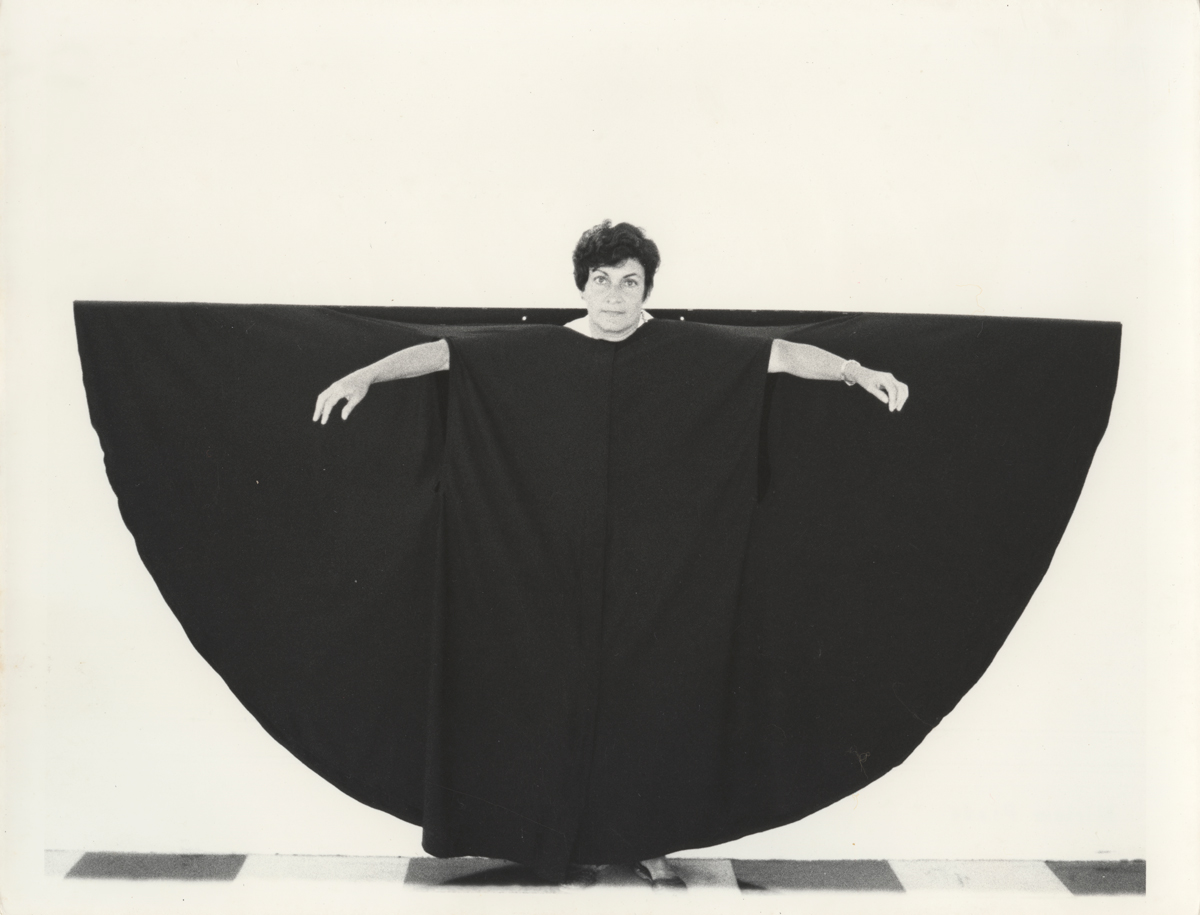
Martha Araújo, Hábito/Habitante (Habit/Inhabitant), 1985. “The Edge of Things.”
COURTESY GALERIA JAQUELINE MARTINS, SÃO PAULO
“The Edge of Things: Dissident Art Under Repressive Regimes”
Eli and Edythe Broad Art Museum, East Lansing, Michigan
Through January 5
This exhibition collects experimental work made between the 1960s and the late 1980s by artists living in oppressive Latin American states. Though the exhibition’s output ranges in style, much of the work is tied together by the use of art as a device to examine social and political hardships, often in blunt, controversial ways. For many of the artists in the exhibition, work was a means of communication—one that often found them pushed to the margins of their own homeland. The show includes work by 18 artists, including Collective de Acciones de Arte (C.A.D.A.) and Letícia Parente. —John Chiaverina
“The Allure of Matter: Material Art from China”
Los Angeles County Museum of Art
Through January 5
Some 40 works crafted with materials ranging from water and wood to gunpowder and Coca-Cola, plus a whole lot more, figure in this survey of Chinese art of the past four decades. Ai Weiwei, Lin Tianmiao, and Cai Guo-Qiang are among the artists included. —J.C.
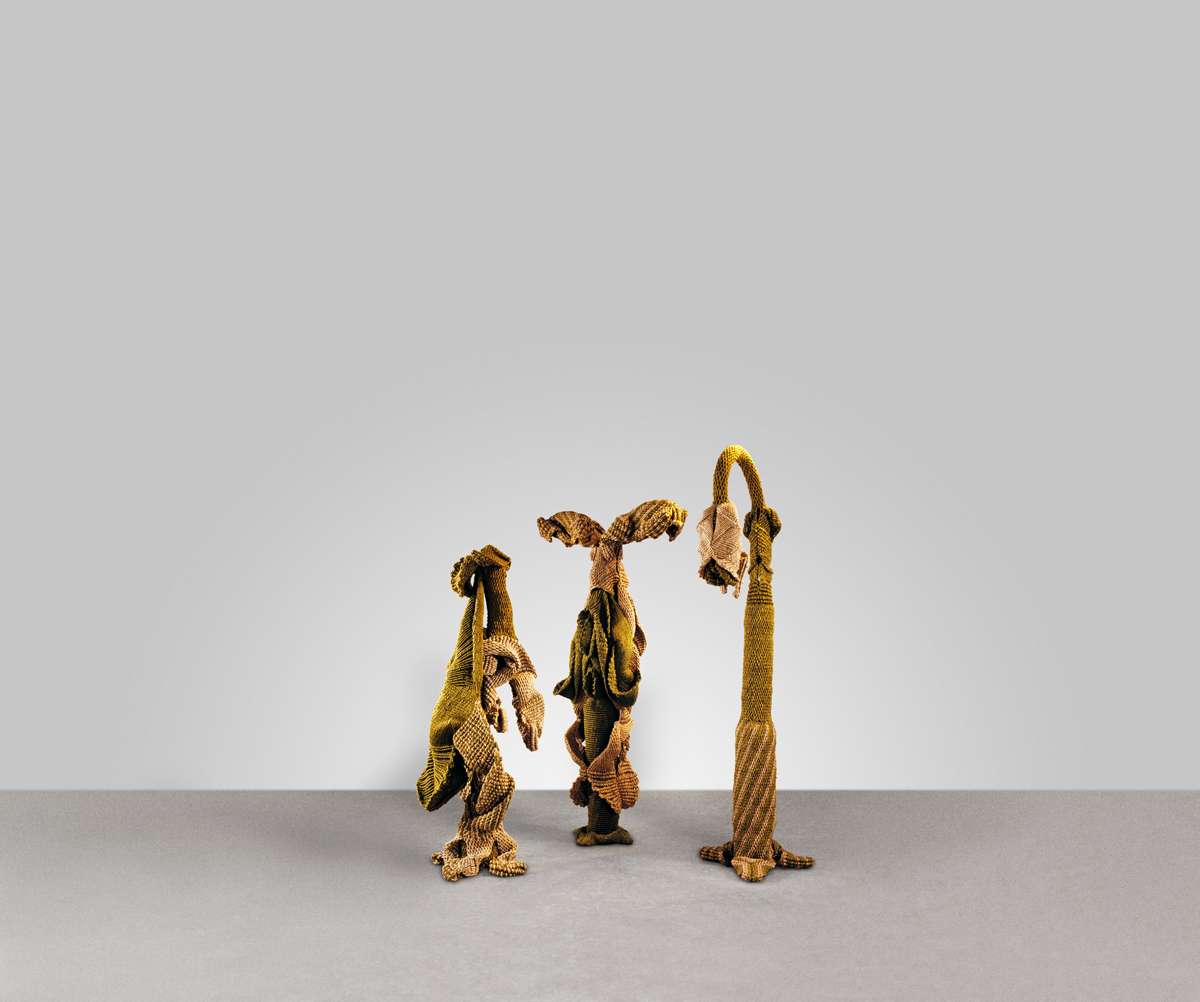
Mrinalini Mukherjee, Vriksh Nata (Arboreal Enactment), 1991–92, natural and dyed hemp, three parts.
AVINASH PASRICHA/©MRINALINI MUKHERJEE/KIRAN NADAR MUSEUM OF ART, NEW DELHI
“Phenomenal Nature: Mrinalini Mukherjee”
Met Breuer, New York
Through September 29
The first U.S. retrospective for sculptor Mrinalini Mukherjee, who died in 2015, will bring together 60 works including her signature fiber creations—knotted with a variety of hand-dyed plant materials—along with pieces from the second half of her career, when she began experimenting with ceramic and bronze. Mukherjee’s organic forms, often inspired by wonders of the natural world, fall between figuration and abstraction, and some of her larger works reference classical Indian sculpture. —Claire Selvin
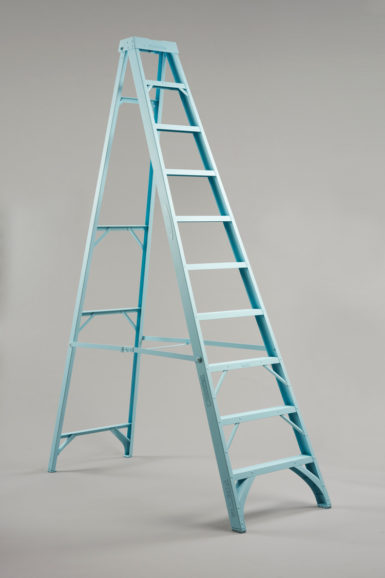
Virgil Abloh, Ladder, 2019.
COURTESY THE ARTIST
“Virgil Abloh: Figures of Speech”
Museum of Contemporary Art, Chicago
June 10–September 22
Last summer, fashion designer Virgil Abloh was seen at his first show as Louis Vuitton’s creative director weeping into the arms of hip-hop star Kanye West. It was a historical moment—Abloh is the label’s first black designer—and now he anticipates another career milestone, thanks to the Museum of Contemporary Art, Chicago, which is mounting his first museum survey. The show highlights Abloh’s accomplishments in fashion, including his minimalist designs for his own brand Off-White, as well as his forays into architecture, design, and music. —Annie Armstrong
“Bauhaus Beginnings”
Getty Museum, Los Angeles
June 11–October 13
To celebrate the 100th anniversary of the storied German art and design school’s founding, “Bauhaus Beginnings” looks at the inception and evolution of the multidisciplinary movement through 250 pieces from the Getty Research Institute’s collections. Woodcuts, drawings, collages, ephemera, and more tell the story of striving for the total union of art and life as it applied to Josef Albers, Wassily Kandinsky, Paul Klee, and numerous other artists whose influence remains today. —A.A.
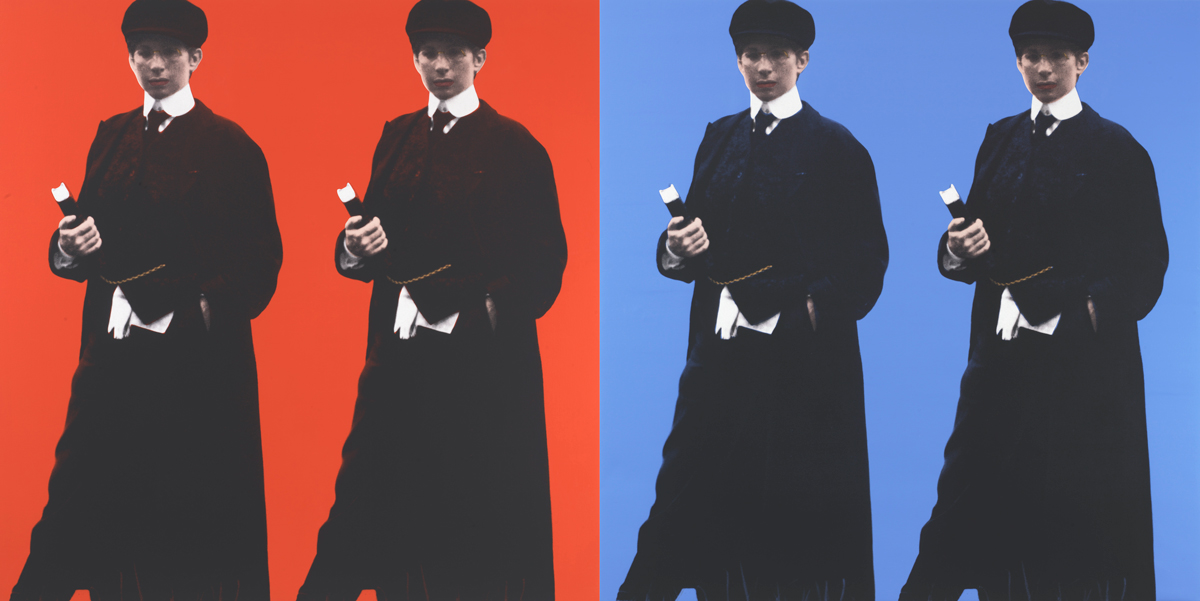
Deborah Kass, Double Double Yentl (My Elvis), 1993, silkscreen and acrylic on canvas. “Transamerica/n.”
©2019 DEBORAH KASS AND ARTISTS RIGHTS SOCIETY (ARS), NEW YORK/COURTESY THE ARTIST
“Transamerica/n: Gender, Identity, and Appearance Today”
McNay Art Museum, San Antonio, Texas
June 20–September 15
Critiques of gender binaries have begun to occupy the headspace of members of the art world—and the world at large. Timed to the 50th anniversary of the Stonewall Uprisings, the exhibition will trace the ways in which artists have fashioned images of themselves from the 1970s to today in a variety of mediums, including photography, sculpture, and installation. Among the artists featured here will be Robert Mapplethorpe, Greer Lankton, Catherine Opie, Jacolby Satterwhite, Deborah Kass, Yasumasa Morimura, JJ Levine, Lesley Dill, and Carlos Betancourt. —M.D.
“The Warmth of Other Suns: Stories of Global Displacement”
The Phillips Collection, Washington, D.C.
June 22–September 22
Named after a storied oral-history book about the Great Migration of African-Americans northward from the South, “The Warmth of Other Suns” will showcase installations, videos, paintings, and documentary images engaged with narratives of migration from all over. Historical and contemporary works by 75 international artists—from the U.S. as well as Algeria, Brazil, Iraq, Lebanon, Mexico, Syria, Vietnam, and other countries—examine past and present experiences of different kinds of refugees. Among the artists surveyed are Hiwa K, Cameron Rowland, and Diego Rivera. —C.S.
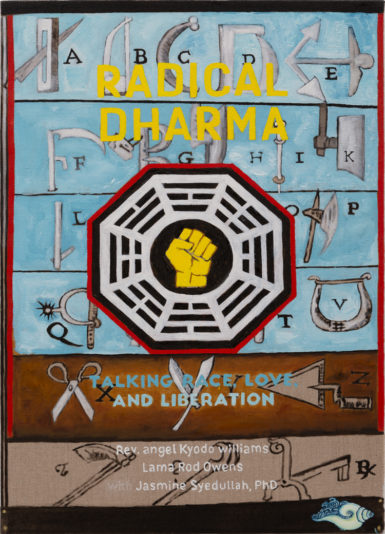
Leidy Churchman, The Teachers, 2018.
AARON WAX/COURTESY MATTHEW MARKS GALLERY/COLLECTION SCOTT LORINSKY
“Leidy Churchman: Crocodile”
CCS Bard Hessel Museum of Art, Annandale-on-Hudson, New York
June 22–October 13
In his paintings, Leidy Churchman covers a wide range of themes, including portraiture, abstraction, landscapes, and images of religious icons. His subjects, often appropriated from readymade sources and rendered slightly ironic, feels perfectly suited for to our current image-saturated age. This exhibition takes a focus on more recent work, with works on view such as Mastercard, a 2013 painting of the credit card logo, and Mahakala, a 2017 painting of the titular Buddhist deity. Churchman has also created a new floor painting for the exhibition. —J.C.
“Less Is a Bore: Maximalist Art & Design”
Institute of Contemporary Art, Boston
June 26–September 22
This multigenerational survey takes a look at art and design with a decidedly unminimalist bent. “Less Is a Bore” starts in the 1970s with artists related to the Pattern and Decoration movement, which relied on extravagant “low” materials like patterned fabrics as a feminist rejoinder to Minimalism, and traces how various over-the-top tendencies have evolved over the years. Among the works to be included are an installation by Polly Apfelbaum, sculpture by Lucas Samaras, furniture by Ettore Sottsass, and patterning by Jasper Johns. —J.C.
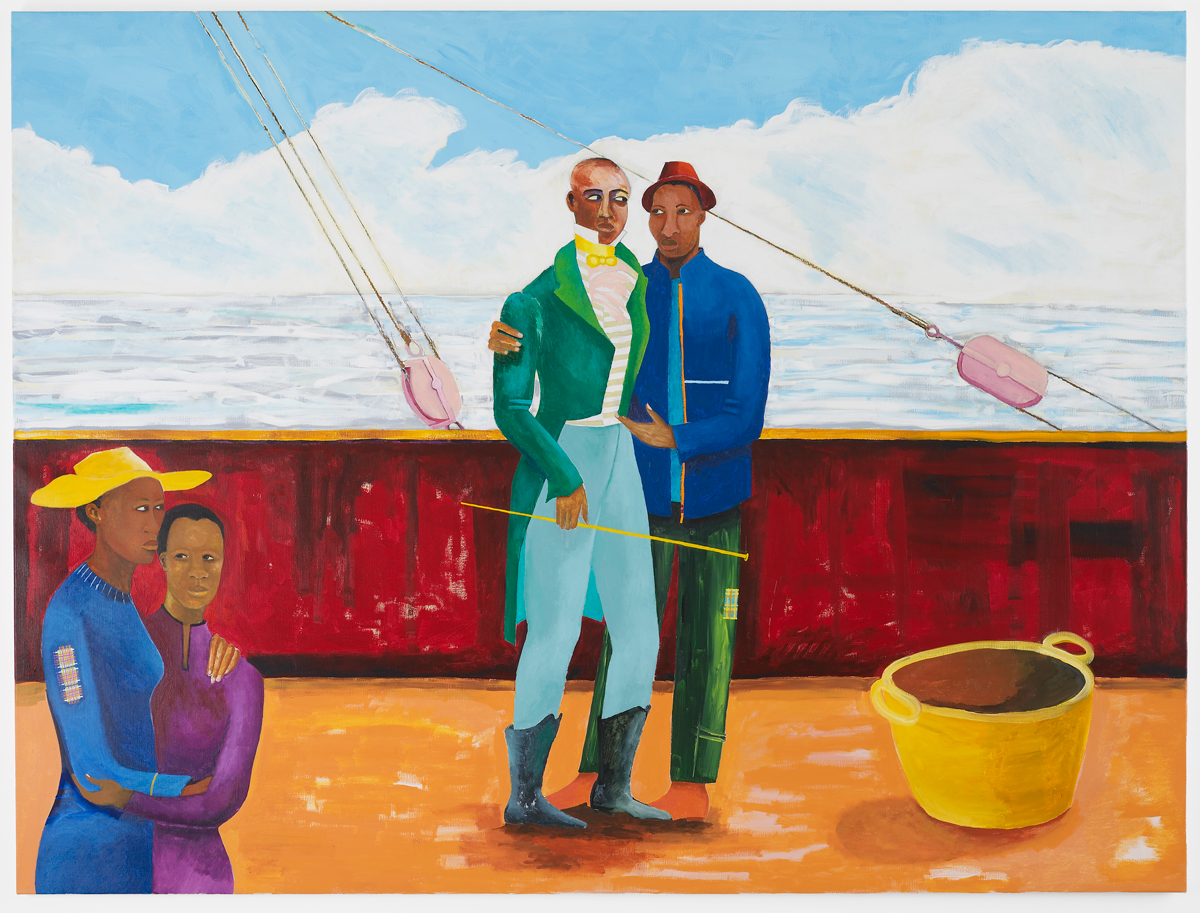
Lubaina Himid, Le Rodeur: The Captain and the Mate, 2017–18, acrylic on canvas.
ANDY KEATE/COURTESY THE ARTIST AND HOLLYBUSH GARDENS
“Lubaina Himid: Work from Underneath”
New Museum, New York
June 26–October 6
Hot off her 2017 Turner Prize win and a series of high-profile exhibitions, including the 2018 Berlin Biennale, Lubaina Himid will bring her multifarious practice—which includes richly hued paintings, textile works, and charismatic cutout sculptures—to New York, where she last had a solo show in 2008, at Peg Alston Gallery. A pivotal figure in the British Black Arts Movement in the 1980s, Himid, born in Zanzibar, Tanzania, and now based in Preston, England, depicts scenes of everyday existence and black history with an inimitable eye for detail, forging an art that radiates life. —Andrew Russeth
“Art’s Biggest Stage: Collecting the Venice Biennale, 2007–2019”
Clark Art Institute, Williamstown, Massachusetts
July 4–October 14
Over the past 12 years, the Clark Institute has built an archive of the paraphernalia produced for the Venice Biennale, including artist editions, books, posters, publicity materials. Spanning the past six editions, this exhibition features promotional materials used to market pavilions at the Biennale by artists from six different continents. To name just a few of the items included in the Clark Institute show, there will be a cowbell, a necklace, perfume, wallpaper, clothing, and—what else?—tote bags. —A.A.
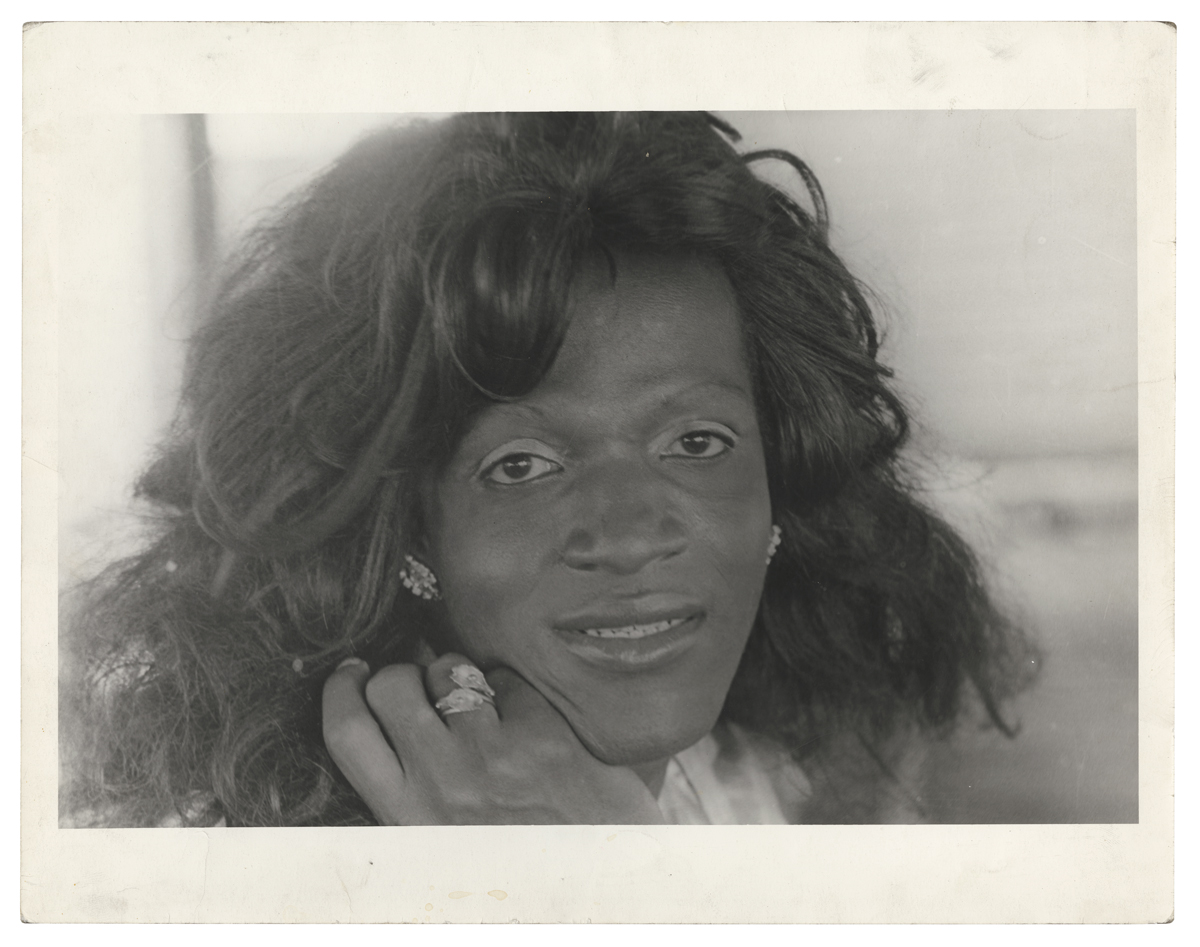
Alvin Baltrop, Marsha P. Johnson, n.d. (1975–86), gelatin silver print.
©2010 THE ALVIN BALTROP TRUST AND THIRD STREAMING, NEW YORK/COURTESY GALERIE BUCHHOLZ, BERLIN/COLOGNE/NEW YORK
“The Life and Times of Alvin Baltrop”
Bronx Museum of the Arts, New York
August 7–February 9
Long under-recognized for his frank, beautiful photographs of the queer underground in 1970s New York, the late artist Alvin Baltrop has been the subject of newfound interest, thanks in part to his work’s inclusion in the 2015 “Greater New York” exhibition at MoMA PS1. This summer, Baltrop will get his due with a career retrospective that will include some 120 of his images, including ones from his archive that have never been publicly exhibited. Baltrop’s black-and-white, often grainy photographs highlight the people who populated the West Side piers and the Meatpacking District—members of a distinctly queer community that formed at the margins of the city, in spaces that offered a respite from the world that sought to oppress them. —M.D.
“Anthony McCall: Dark Rooms, Solid Light”
Albright-Knox Art Gallery, Buffalo, New York
August 16–November 7
The sculptural potential of light will be the subject of the first solo museum show in North America for Anthony McCall, whose work takes luminescent forms that prove transfixing. The old-fashioned environs of the historic Albright-Knox will be given over to columns and shafts (composed of light and wisps from smoke machines) that can be walked through or otherwise stared at, with eyes agog. The show will feature five large-scale installations as well as early performance films, a slide projection work, and works on paper dating back to 1970. —Andy Battaglia
INTERNATIONAL
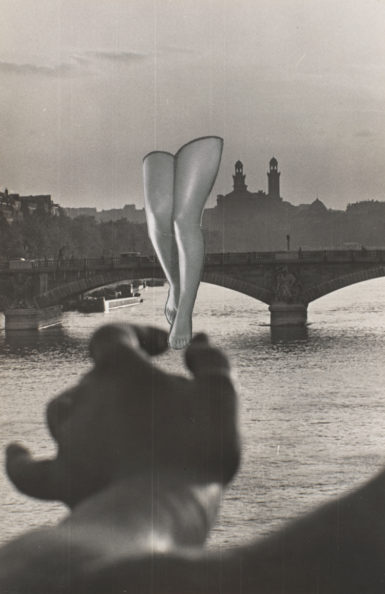
Dora Maar, Sans titre, 1935, gelatin silver print.
PHOTO: ©CENTRE POMPIDOU, MNAM-CCI / P. MIGEAT / DIST. RMN-GP; ART: ©ADAGP, PARIS 2019/CENTRE POMPIDOU, MUSÉE NATIONAL D’ART MODERNE – CENTRE DE CRÉATION INDUSTRIELLE, PARIS
Dora Maar
Centre Pompidou, Paris
Through July 29
Surrealism has been the subject of a much-needed art-historical rewrite in recent years, with a new emphasis on female artists involved in the movement such as Leonor Fini and Dorothea Tanning. The latest show in this vein is a Dora Maar retrospective that aims to establish that she was more than just Pablo Picasso’s muse. Maar created some of the finest examples of Surrealist photography in the form of seductive collages, with hands mysteriously emerging from shells and disembodied legs dancing on the River Seine. After its stint in Paris, this exhibition heads to the Getty Museum in Los Angeles and Tate Modern in London. —Alex Greenberger
Natalia Goncharova
Tate Modern, London
June 6–September 8
Natalia Goncharova, a prominent figure in the 20th-century Russian avant-garde, created vibrant Futurist paintings, designed books and costumes, and experimented with body art. Most of her accomplishments have gone under-recognized, however, so Tate Modern—as part of a stated directive to bring more women into the history of modernism—is giving Goncharova her first retrospective in England. The show considers the ways in which Goncharova drew inspiration from the Impressionists, Russian folk artists, Fauvists, and others to forge her singular visual language full of fractured compositions and billowing greenery. —C.S.
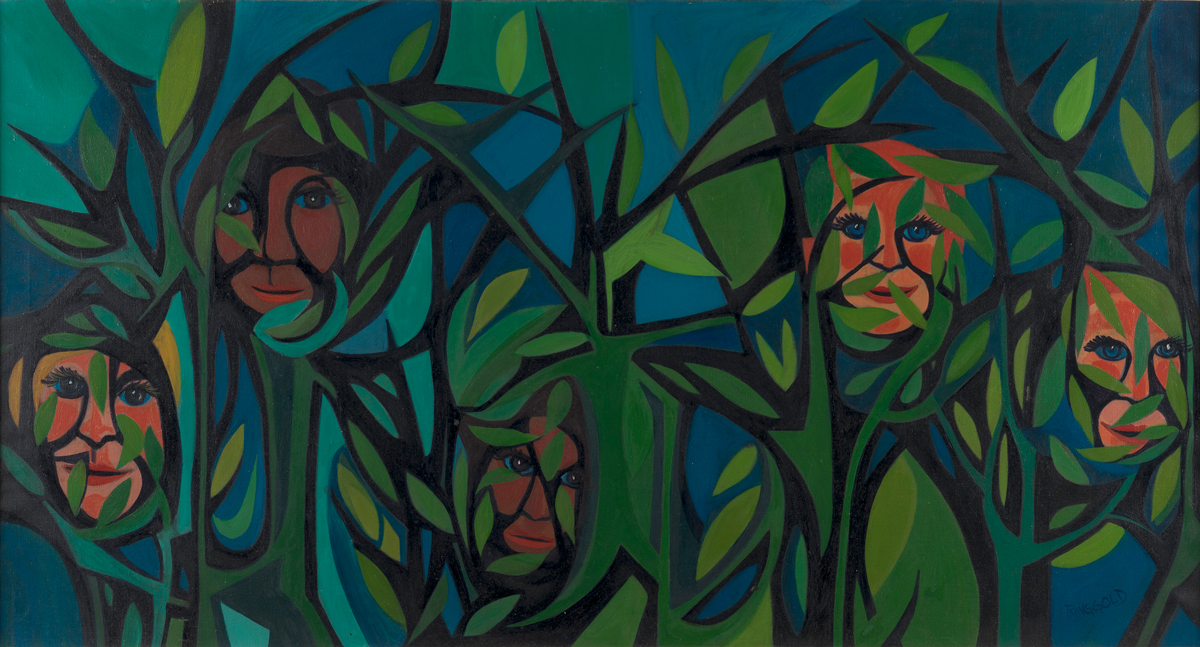
Faith Ringgold, American People #15: Hide Little Children, 1966, oil on canvas.
©2018 FAITH RINGGOLD AND ARTISTS RIGHTS SOCIETY (ARS), NEW YORK/COURTESY PIPPY HOULDSWORTH GALLERY, LONDON/PRIVATE COLLECTION
Faith Ringgold
Serpentine Gallery, London
June 6–September 8
Over the course of more than half a century, the work of storied African-American painter, activist, and children’s book illustrator Faith Ringgold has ranged from incisive paintings that indict the long and enduring history of racism in the U.S. to joyous textile works that blend stories of family and art history to an addictive mobile-phone game that concerns quilt patterns. At the age of 88, Ringgold is finally having her first exhibition at a European museum. Now the question is: Which American institutions will take this show or organize their own? —A.R.
“Picasso – Birth of a Genius”
UCCA Center for Contemporary Art, Beijing
June 15–September 1
This 103-work Picasso survey is the largest of its kind ever to be staged in China, with offerings drawn from the Musée National Picasso in Paris and a focus primarily on the first three decades of his career. The artist’s Blue and Rose Periods will be represented along with his experiments with Cubism and classicism. By offering such a big showcase to prospective new audiences, UCCA director Philip Tinari said, the exhibition provides an opportunity “to examine the very underpinnings” of contemporary art. —A.A.
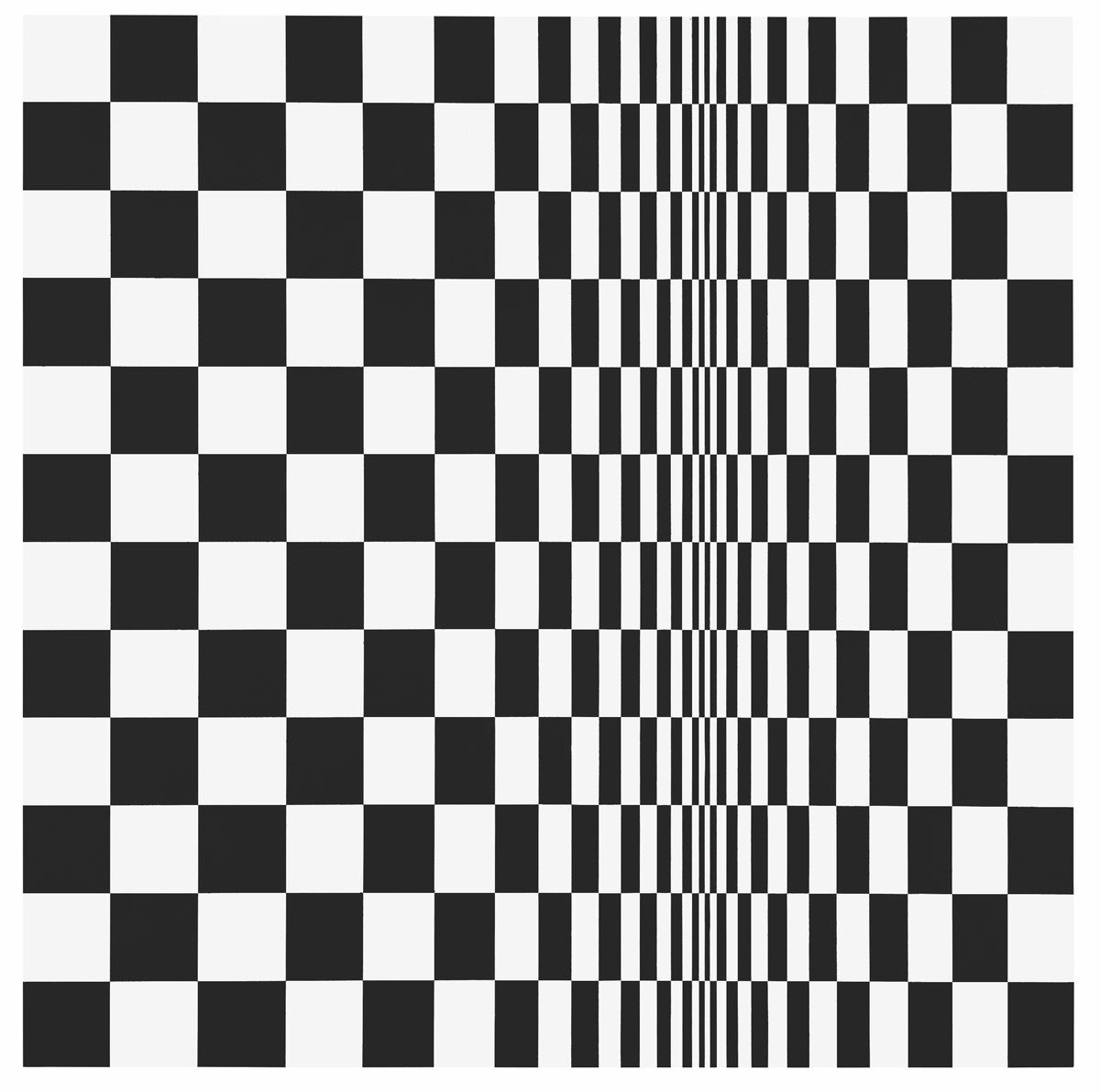
Bridget Riley, Movement in Squares, 1961, synthetic emulsion on board.
©BRIDGET RILEY 2019, ALL RIGHTS RESERVED/ARTS COUNCIL COLLECTION, SOUTHBANK CENTRE, LONDON
Bridget Riley
National Galleries of Scotland, Edinburgh
June 15–September 22
Spanning 70 years, this survey of the mesmerizing Op-art painter Bridget Riley is being touted as the first of its kind in Scotland and the first in the U.K. in 16 years. (After its stint at the National Gallery of Scotland, it will travel to the Hayward Gallery in London.) With a focus on Riley’s process over the course of her career, the exhibition will feature early paintings and drawings, formative works of the 1960s, wall paintings, and more. —A.B.
“Maria Lai: Holding the Sun by the Hand”
MAXXI, Rome
June 19–January 12, 2020
To celebrate the 100th anniversary of the birth of Maria Lai, whose work appeared in 2017 in both Documenta 14 and the 57th Venice Biennale, MAXXI stages a major survey of the late Sardinian artist’s full career. The show includes more than 200 pieces spanning five decades, including sewn books and documentation of Lai’s “social sculptures”—public pieces that involved the participation of everyday people in ways that anticipate the relational aesthetics movement of the 1990s and 2000s. One such work required tying a miles-long ribbon around houses and a mountain to help connect a town’s inhabitants. —J.C.
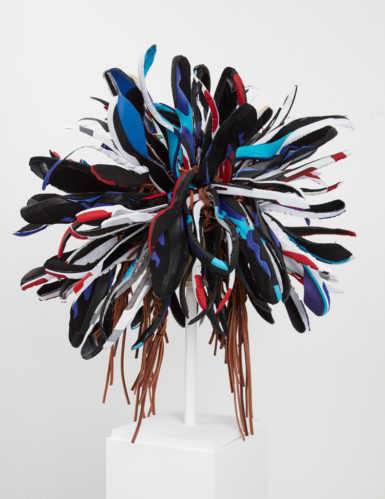
Brian Jungen, Warrior 1, 2017, Nike Air Jordans and leather.
JASON WYCHE/©BRIAN JUNGEN/DALLAS MUSEUM OF ART, TWO X TWO FOR AIDS AND ART FUND
“Brian Jungen: Friendship Centre”
Art Gallery of Ontario, Toronto
June 20–August 25
Friendship Centers in Canada serve as gathering spaces and venues for knowledge-sharing for indigenous people. Brian Jungen, an artist of Dane-Zaa and Swiss ancestry, channels that spirit of community in work featured in this mid-career survey. On view will be selections from his best-known series, “Prototypes for New Understanding”—pieces that Jungen fashioned from Nike Air Jordans resembling the ceremonial masks of the Pacific Northwest’s Haida people—as well as early drawings, ephemera, and a film made with Duane Linklater.
—M.D.
“Shiota Chiharu: The Soul Trembles”
Mori Art Museum, Tokyo
June 20–October 27
Shiota Chiharu’s largest-ever exhibition will trace 25 years of the artist’s career. It will feature six of Chiharu’s large-scale, immersive installations comprising threads strung across entire gallery spaces. One such work, Uncertain Journey (2016), consists of bright red threads sprouting from the metal frames of boats, creating an environment meant to form an expansive, sinuous sea. The Mori Art Museum’s survey will spotlight the ways Chiharu explores memory, dreams, and feelings of unease, and will include video footage of her performances alongside sculptural works, photographs, and drawings. —C.S.
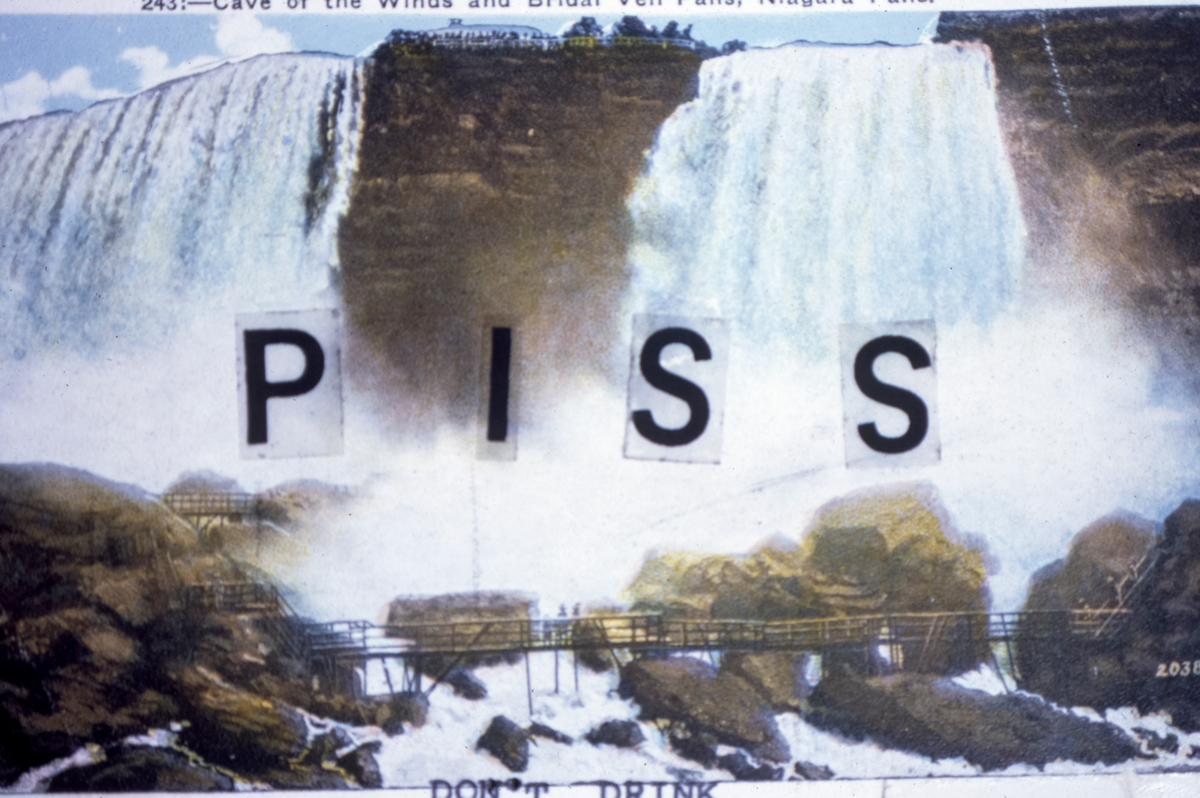
Image Bank, Submission Piss Pics for Barbara Rrose, ca. 1972.
MORRIS AND HELEN BELKIN ART GALLERY COLLECTION, MORRIS/TRASOV ARCHIVE, UNIVERSITY OF BRITISH COLUMBIA
Image Bank
KW Institute for Contemporary Art, Berlin
June 22–September 19
In 1970, three Canadian artists—Gary Lee-Nova, Michael Morris, and Vincent Trasov—banded together to form Image Bank, a loose collective through which artists sent each other readymade images by mail. Their contributions were often absurd, and the surrealist spirit extended to the collective’s very ethos. “Image Bank always existed in the mind,” Trasov once remarked. And yet, for something that was never truly there, Image Bank attracted a wide range of admirers and collaborators, among them the Fluxus artist Dick Higgins and the collective General Idea. This show will survey the collective’s archive, which features photographs, films, props, postcards, stationery, and much more. —A.G.
Henrik Olesen
Museo Reina Sofia, Madrid
June 26–October 21
Henrik Olesen’s first solo exhibition in Spain will feature a selection of the artist’s sculptures, which often reconfigure quotidian objects into assemblages that lay bare their political contexts. Alongside these pieces will be architectural interventions by the Danish artist that will respond to the Reina Sofia’s building, which housed a hospital during the 16th century. In the process, Olesen will tackle questions related to power structures, knowledge, and social conventions. —A.A.
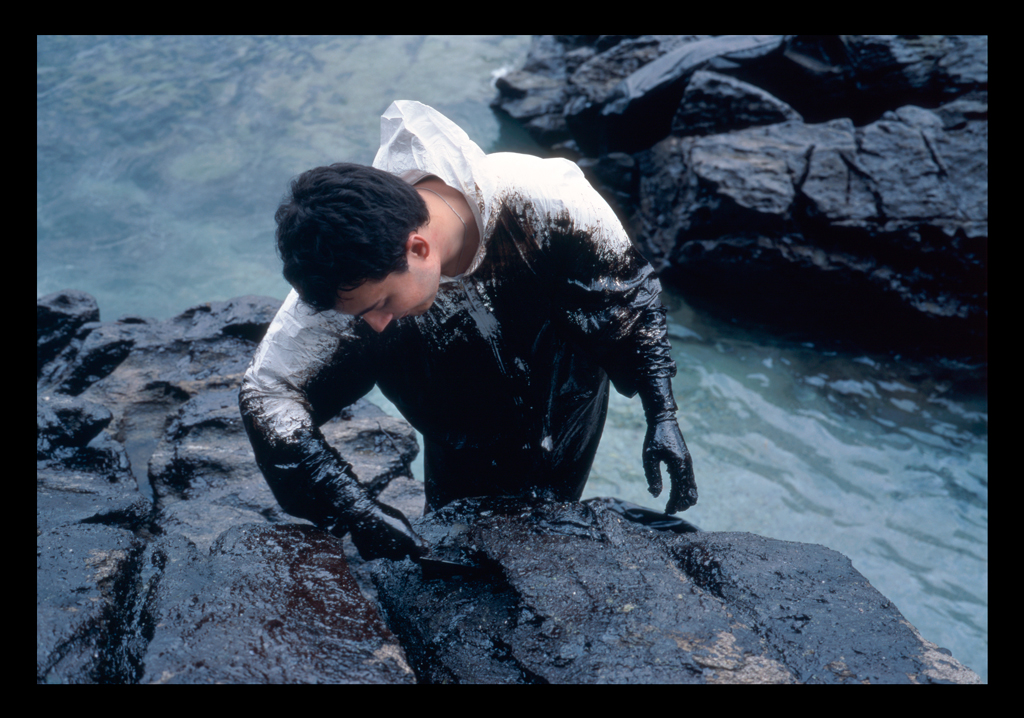
Allan Sekula, Volunteer on the Edge (Islas Cies 12-20-02), from the series “Black Tide | Marea Negra,” 2002–03, Cibachrome print. “The Coming World.”
ALLAN SEKULA STUDIO/THYSSEN-BORNEMISZA ART CONTEMPORARY COLLECTION
“The Coming World: Ecology as Politics 2030–2100”
Garage Museum of Contemporary of Art, Moscow
June 28–December 1
This speculative exhibition takes as its premise two future dates: 2030, the year when some theorists believe the world will run out of oil reserves, and 2100, when science-fiction writer Arthur C. Clarke postulated humans would live on planets other than Earth. With a focus on changing ecosystems here on Earth, “The Coming World” looks at how humans will adapt. Works spanning 50 years include Hans Haacke’s early pieces about biological systems, a six-channel video installation by John Akomfrah, and a newly commissioned piece about Cold War–era politics by Huang Yong Ping. —A.G.
Rencontres d’Arles
Various venues, Arles, France
July 1–September 22
This year marks the 50th-anniversary edition of Rencontres d’Arles, a widely celebrated photography festival held annually in the south of France. This special edition will feature a few exhibitions spotlighting its own history—one is a two-person show paying homage to Lucien Clergue, the festival’s founder, and his mentor, photographer Edward Weston. But the festival looks to the future as well this year, spotlighting young up-and-comers such as Pixy Liao and Mohamed Bourouissa, both known for their images of millennials pondering changing social mores within their communities. Also surveyed at shows held through the event will be Libuše Jarcovjáková, Helen Levitt, Valérie Belin, and the Arab Image Foundation. —A.G.
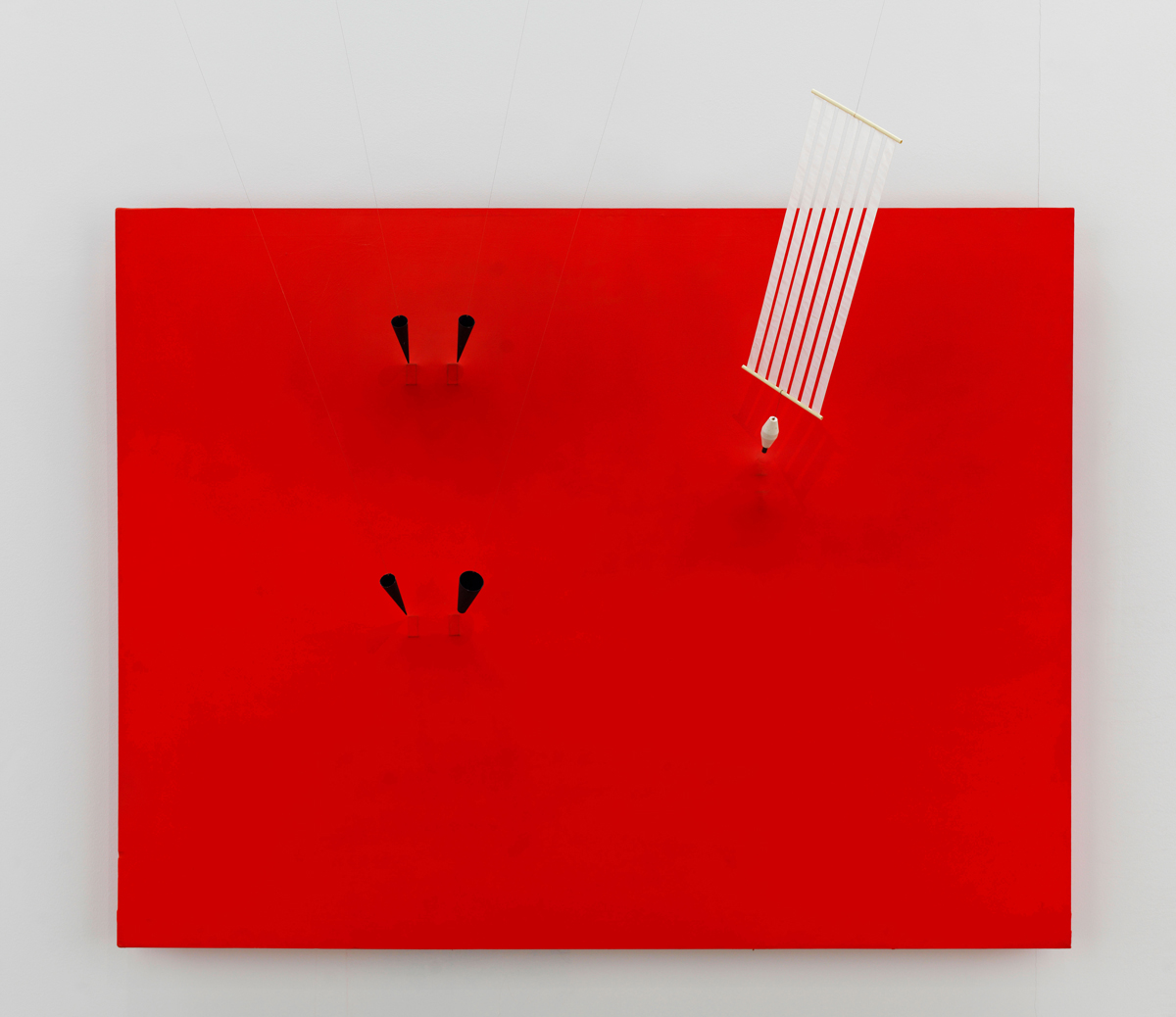
Takis, Magnetic Wall 9 (Red) 1961, acrylic paint on canvas, magnets, metal, cloth, and nylon thread.
©2019 ADAGP, PARIS AND DACS, LONDON/CENTRE POMPIDOU, MUSÉE NATIONAL D’ART MODERNE – CENTRE DE CRÉATION INDUSTRIELLE, PARIS
Takis
Tate Modern, London
July 3–October 27
It’s been more than two decades since Takis’s work was properly surveyed in Europe. Now Tate plans to showcase the full range of the pioneering kinetic artist’s career with this 70-piece display, highlighting his work’s connections to science, technology, and natural phenomena. Much of Takis’s output explores the power and allure of electromagnetism, and to attest to this ongoing interest, a selection of his famed “Signals” sculptures—magnetized works with slim antennae stemming from their bases—will be on view in the exhibition, along with his sound pieces Musicales, Sphere, and Gong. —C.S.
“Gelatin & Liam Gillick: Stinking Dawn”
Kunsthalle Wien, Vienna
July 5–October 6
The collective Gelatin (which also sometimes goes by the name Gelitin) is known for its oddball antics. A recent New York show featured ceramic sculptures resembling blobs with impressions and holes in them; a press statement revealed that the concavities were formed by the artists’ genitals. It should come as no surprise, then, that for their latest show, they’ll continue in an absurd vein. They plan to turn part of the Kunsthalle Wien into a functional film set that will morph throughout the show’s run. The screenplay in this case comes from artist Liam Gillick, and the actors in the production will be attendees at the show’s opening. —A.G.
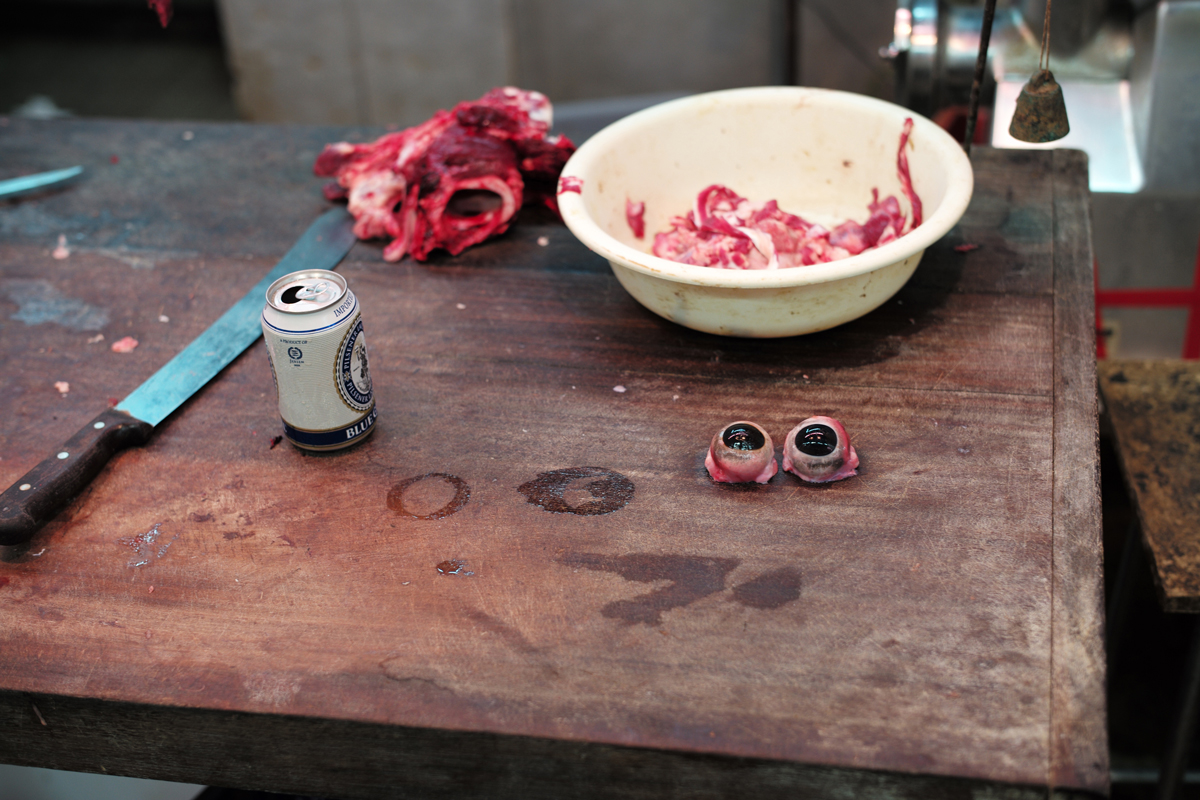
Gelatin/Liam Gillick, Stinking Dawn, 2019, Kunsthalle Wien.
COURTESY GALERIE MEYER-KAINER
“Leandro Erlich: Liminal”
Museo de Arte Latinamericano Buenos Aires
July 5–October 27
Despite being one of the most important artists working today in Argentina, Leandro Erlich has never been fully surveyed in his home country. That will change with this show, featuring 13 of the artist’s disorienting sculptures and large-scale works. Often reliant on trompe l’oeil effects, his works render pedestrian objects decidedly un-pedestrian—he has submerged viewers in a pool and allowed them to remain dry, and brought clouds indoors. Aptly titled “Liminal” and filling two of MALBA’s floors, the show is organized by Dan Cameron. —A.A.
“Garden of Earthly Delights”
Gropius Bau, Berlin
July 26–December 1
The weird world of Hieronymus Bosch provides the historical grounding for this survey of contemporary art focused on gardens and growth. Curators Stephanie Rosenthal and Clara Meister have cast their net wide, bringing together a sculptural installation by Rashid Johnson, a blooming by Maria Thereza Alves, photographic work by Louise Lawler, and more. Nathalie Djurberg and Hans Berg made new work specifically for the show: a new virtual-reality piece in which viewers can walk between heaven and hell. —A.G.
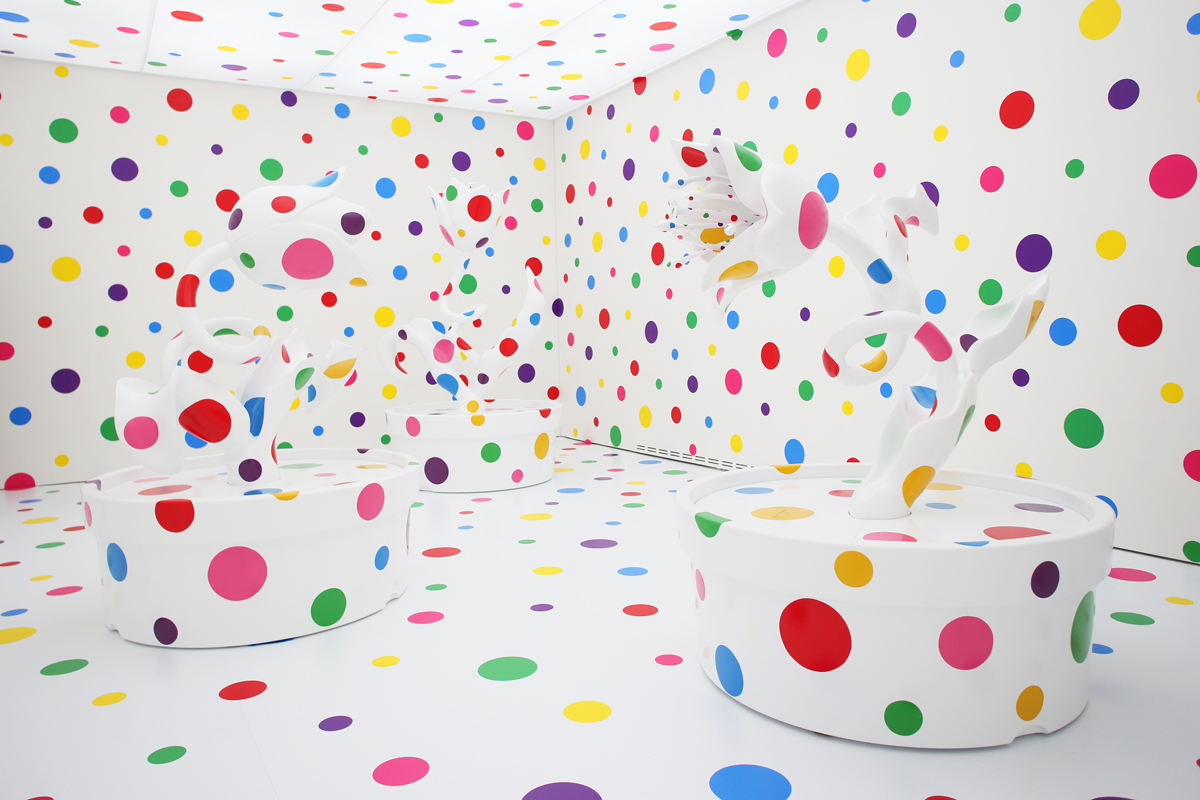
Yayoi Kusama, With All My Love for the Tulips, I Pray Forever, 2013–14, fiberglass reinforced plastic, urethane paint, and stickers, installation view, at Shanghai MoCA. “Garden of Earthly Delights.”
©YAYOI KUSAMA/COURTESY OTA FINE ARTS, TOKYO / SINGAPORE / SHANGHAI
Aichi Triennale
Various venues, Aichi, Japan
August 1–October 14
Curated by journalist and activist Tsuda Daisuke, the fourth edition of one of Japan’s biggest contemporary art events will be titled “Taming Y/Our Passion,” and it will focus on the Aichi Prefecture’s history as a leading manufacturing region and its place in the global political arena. Work from more than 80 artists—among them Candice Breitz, Minouk Lim, Ho Tzu Nyen, Koki Tanaka, and Javier Téllez—will be spread across four venues in the city. —J.C.
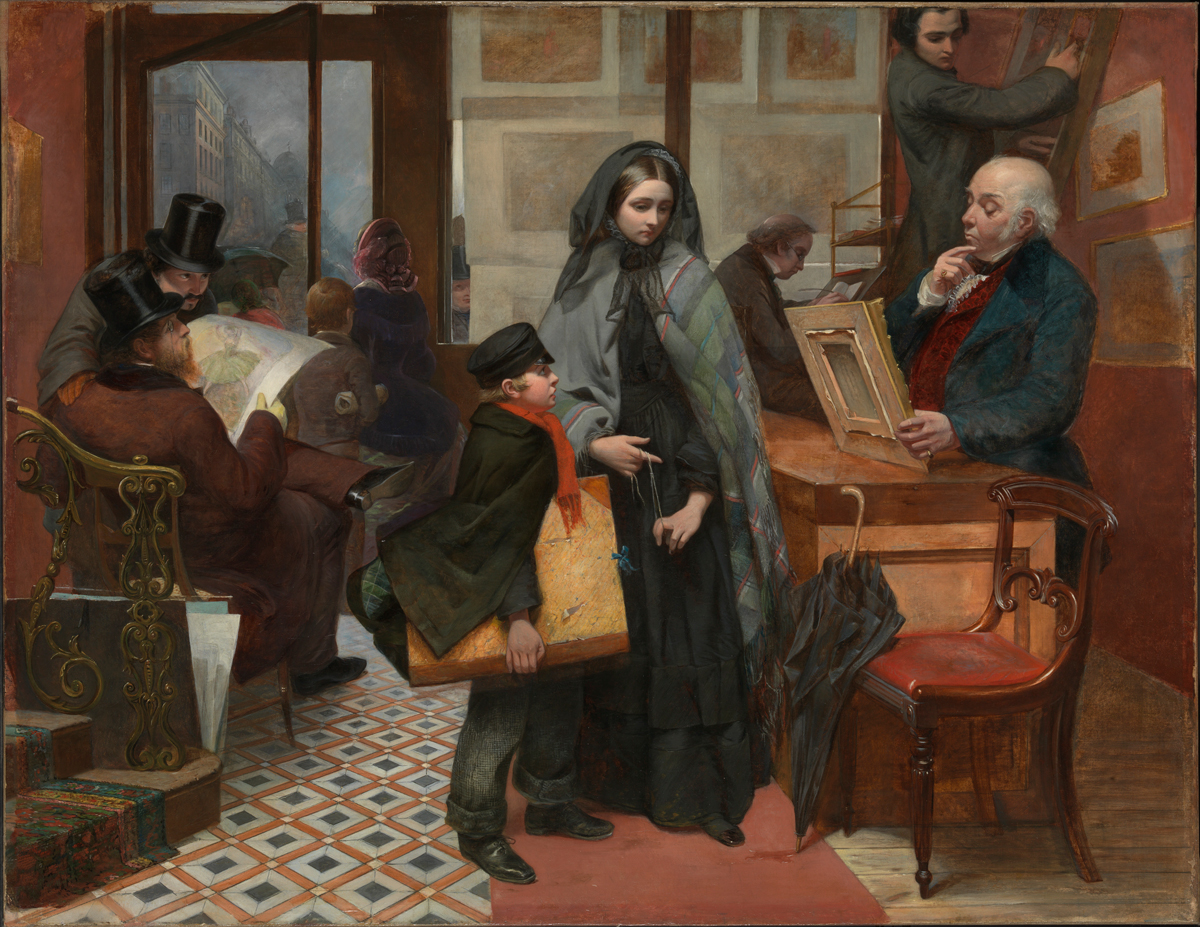
Emily Osborn, Nameless and Friendless. “The rich man’s wealth is his strong city, etc.” – Proverbs, x, 15, 1857, oil on canvas. “Histórias das Mulheres.”
TATE, LONDON
“Historias das Mulheres” and “Historias Feministas”
Museu de Arte de São Paulo
August 23–November 17
The Museu de Arte de São Paulo has engaged in serious art-historical revision in recent years, with survey shows on subjects such as sexuality and slavery. The latest exhibition in the museum’s “Historias” series reaches back centuries to highlight age-old work by women alongside that of proto-feminist practices and groups. One such group is the Union des Femmes Peintres et Sculpteurs, a congregation of women painters and sculptors who banded together in 19th-century France. —A.G.
“Why Should I Hesitate? Putting Drawings to Work”
Norval Foundation and Zeitz Museum of Contemporary African Art, Cape Town, South Africa
August 24–March 23, 2020; August 25–March 23, 2020
William Kentridge’s work is surveyed frequently in Europe and the U.S., but seldom has it been given a proper platform in his home country, South Africa. The Zeitz Museum of Contemporary Art and the Norval Foundation will mount an exhibition spanning his full career. The Zeitz Museum portion will showcase more than 40 years of Kentridge’s multifarious artistic production, and showcase early and new works, some of which have never before been on view in South Africa. Among the pieces here will be drawings, stop-frame animations, videos, prints, tapestries, and large-scale installations, many of them dealing with political strife, memory, and trauma. The Norval Foundation section, focusing on Kentridge’s sculptures and their roots in his props and animated images, will include newly commissioned works. —C.S.
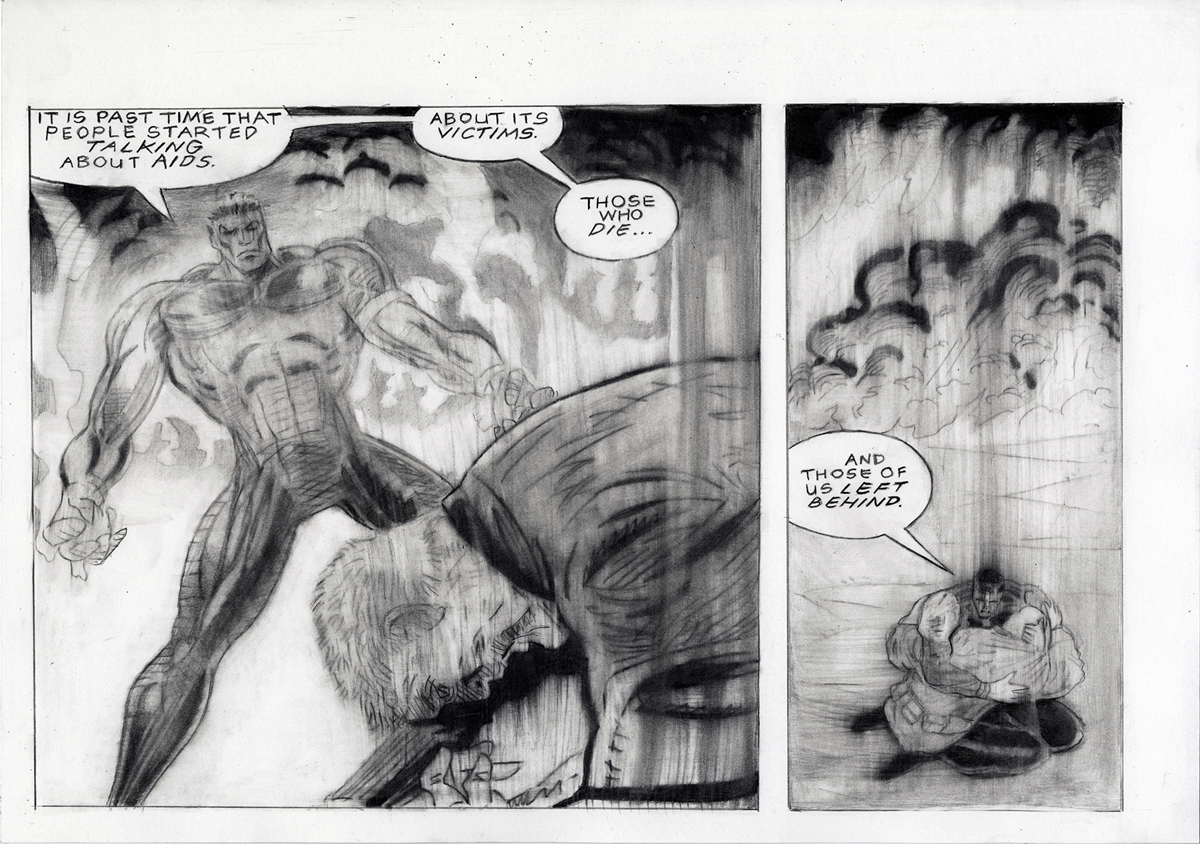
Marc Bauer, Super Heroes, 2018, pencil on paper.
COURTESY THE ARTIST AND GALERIE PETER KILCHMANN, ZÜRICH
“United by AIDS—An Exhibition About Loss, Remembrance, Activism and Art in Response to HIV/AIDS”
Migros Museum für Gegenwartskunst, Zurich
August 31–November 2
With the 50th anniversary of the Stonewall Rebellion commemorated, the art world is now turning its attention to another marker of queer history: the 40th anniversary of the beginning of the global AIDS pandemic. At its height from the mid-1980s to the 1990s, the AIDS crisis drastically altered the world of art—and the world at large. This exhibition will look at the ways in which the losses of those times continue to affect the present, with work by artists like Lyle Ashton Harris, Nayland Blake, fierce pussy, Keith Haring, General Idea, Gran Fury, Group Material, Felix Gonzalez Torres, Zoe Leonard, Carlos Motta, Cookie Mueller & Vittorio Scarpati, Wolfgang Tillmans, David Wojnarowicz, and Martin Wong. —M.D.
A version of this story originally appeared in the Summer 2019 issue of ARTnews on page 20 under the title “Editors’ Picks.”
[ad_2]
Source link

